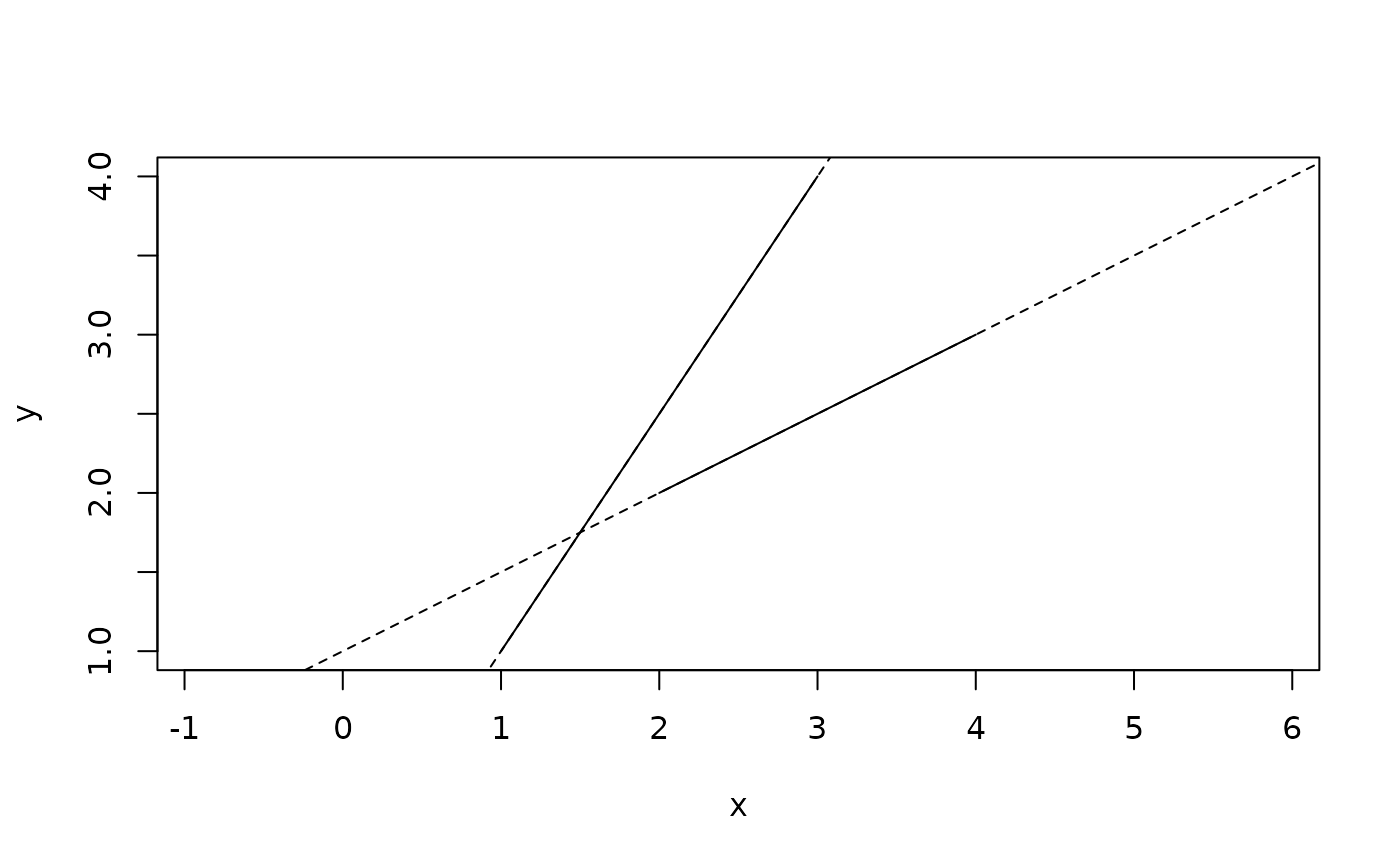A segment is a finite directed line going from one point to another. If the two points are equal it is considered to be degenerate. A segment can be flipped be taking its negative.
Arguments
- ...
Various input. See the Constructor section.
- default_dim
The dimensionality when constructing an empty vector
- x
A vector of segments or an object to convert to it
Constructors
2 and 3 dimensional segments
Providing two points will construct segments starting at the first point and ending at the second
Providing a point and a vector will construct segments starting at the point and ending at the point defined by the start point plus the vector
Examples
# Construction
p <- point(sample(4), sample(4))
s <- segment(p[1:2], p[3:4])
s
#> <2D segments [2]>
#> [1] [<x:3, y:4>, <x:1, y:1>] [<x:2, y:2>, <x:4, y:3>]
plot(s)
segment(p[1:2], as_vec(p[3:4]))
#> <2D segments [2]>
#> [1] [<x:3, y:4>, <x:4, y:5>] [<x:2, y:2>, <x:6, y:5>]
# Flip segments
-s
#> <2D segments [2]>
#> [1] [<x:1, y:1>, <x:3, y:4>] [<x:4, y:3>, <x:2, y:2>]
# Segments can be converted to vectors, directions and lines
as_vec(s)
#> <2D vectors [2]>
#> [1] <x:-2, y:-3> <x:2, y:1>
as_direction(s)
#> <2D directions [2]>
#> [1] <dx:-2, dy:-3> <dx:2, dy:1>
as_line(s)
#> <2D lines [2]>
#> [1] <a:3, b:-2, c:-1> <a:-1, b:2, c:-2>
plot(s)
euclid_plot(as_line(s), lty = 2)
